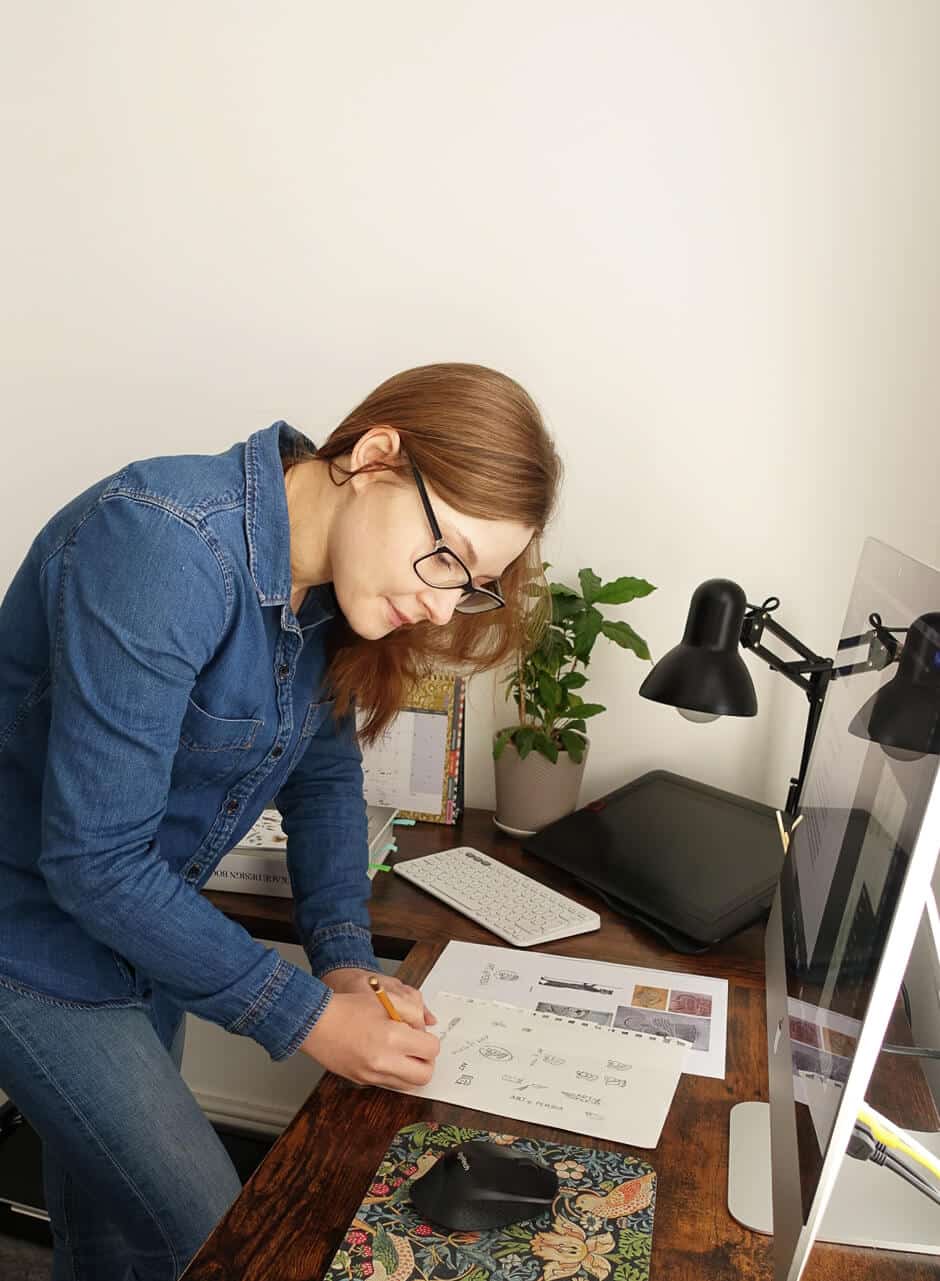Avoid the mistakes I've made, while creating my own brand.
Building a brand is a process. When I started my business, I had an idea for my brand that I wanted to work on. However, the truth is that the brand evolves with you as you learn who you like to work with and how you want to be perceived. In this article, I will take you through the process of creating my own brand.

1. Starting a brand: Choosing a name
While I started, I thought I would mostly focus on my art, selling my paintings, and working additionaly as a freelance graphic/brand designer.
However, things didn’t go as planned. I ended up focusing more on the design side, initially assisting candle businesses with their logos and labels. Eventually, I realized that a logo and label alone are insufficient in such a saturated market like candles. So, I began learning and offering more complex solutions. From the beginning, I knew that I needed a strong, not overly complicated, and unique name.
I spent some time pondering the perfect solution. My name is quite long, so I knew it wouldn’t work. That’s why I came up with ‘artphysis,’ a combination of ‘art’ (reflecting my educational background) and ‘physis,’ meaning ‘the nature of things’ in Greek. Nature is my greatest inspiration. I decided to let the name settle in my mind for a few nights, and it has remained with me ever since. Recently, I also trademarked it.
Take the time to carefully consider your name. By doing it correctly from the beginning, you will avoid unnecessary changes that can lead to confusing your clients with constant name alterations.
Mistake to avoid: Don’t wait with trademarking, especially if your name is not that unique. If you’re serious about your business, you should consider it. The process takes some time, but it’s not overly expensive or complicated (based on my knowledge of trademarking in the UK).

2. Choosing the strategy and creating a strong offer
Well, this is the part where I initially believed I had a strong brand strategy, but in reality, I hadn’t fully developed one. I had a concept of the types of businesses I wanted to collaborate with, how to set myself apart, and the values that I wanted my brand to embody. However, I hadn’t clearly defined a strong offer and client persona. What I didn’t know at the time was that my main focus would be on branding for smaller businesses within specific industries.
As I worked on my strategy, I acquired extensive knowledge in the process, which now enables me to provide even better assistance to businesses, particularly in the strategic aspect, given that I’ve personally gone through the same experience.
Reflect on what makes you unique, and how your brand will embody your mission and values. Describe your target audience in detail and research your competitors. A strong brand strategy from the beginning is a solid starting point to build upon.
Mistake to avoid: Get your offer done even before going through the branding process. It is important to ensure that people know what you do and how you can help them.
3. Brand identity and how to build a timeless one
Even before I started my business, I always believed in finding meaningful solutions. That’s why I chose that brand name. There’s also a reason why I don’t use black in my identity. It’s because I got inspired by impressionists, who avoid using black. Since I have an art background, I want to use it as an advantage to stand out in the market.
I had a clear idea of how I want to build my brand. I realized it’s not good to change everything too often. My logo still looks quite similar to the first one I made, I just changed the fonts and structure a bit. Fonts and colours have changed over time, but people still recognize me by the specific blue shade and botanical illustrations I use.
Take the time to think about your visual identity. It will change, but at least create a strong, well-thought-out foundation so that you can build upon it rather than replacing it, and breaking consistency. If you need a logo to place somewhere quickly or if you're just starting out, consider using text or a simple font.
If you need help with strategy and identity, please consider checking out my Simple Strategy & Identity service. Alternatively, if you’re looking for a more affordable yet comprehensive solution, you can explore my Branding Express service.
Mistake to avoid: Avoid quick solutions, such as using any logo template to start with, especially if you’re on a budget. It could be a waste of money if the design decision is not well-thought-out. If you’re serious about your business, your identity should reflect your strategy. Branding is not solely about personal preferences, but also about how you’ll be perceived by others.

4. Brand revisions, changes, and consistency
I write a lot about consistency, but that doesn’t mean never changing anything. Being consistent about improving your brand and working on a solid image is what you need. While I recently reviewed my brand, I felt even stronger about my strategy and focusing mostly on working with sustainable businesses. I’ve kept the blue shade as I found that it’s a recognizable part of my brand. I made the decision to change the font to one that evokes a more botanical premium feeling rather than a botanical casual one. Brand revision is about checking what is working, but also avoiding unnecessary changes dictated by personal feelings. I do love black, and I’ve been thinking about changing the text colours to black. However, I would probably compromise my recognition point, and I almost made that mistake.
Ensure you go through a brand revision once a year, taking into consideration both brand strategy and visual identity. Make decisions based on thorough research. Changes are beneficial when they result in an upgrade to your brand, not just your personal preferences.
Mistake to avoid: Do not solely focus on your personal thoughts about your brand. While it is important to have a passion for it, also take into consideration significant factors, such as your audience.
5. Live the brand values and talk about your offer
I primarily focused on sharing my knowledge and educating people about branding, but I made the opposite mistake compared to many others. Typically, people share their products and services by describing how good they are. However, I haven’t done that at all. While it’s essential to concentrate on more than selling, it’s also crucial to put your offer out there! I’ve assumed that people know what to expect and what I do, but it’s still a work in progress for me to communicate my offer more frequently and in a way that will resonate with my audience.
Make sure you tell your offer in a clear and simple way that speaks to your audience. Just selling is not very good, so make sure you actually share what you do.
Mistake to avoid: While sharing your product or offer is important, don’t forget that people are buying from people. Just selling isn’t enough. Think about your brand purpose and why this business is significant to you; tell people why you love it!
6. Invest in your business and skills
This one is actually the most important lesson I’ve learned: When I quit my regular job, I had money saved for over a year to start my freelance journey. Because I quit my job before starting, I’ve been afraid to invest in branding courses, training, or a business coach. Now I see that because of that, I haven’t made as much progress as I wanted to. If I had the chance to start again, I would invest in my skills and business more expediently.
Take care of your business; get professionals on board when possible. It really helps you grow faster and more effectively.
Mistake to avoid: The choice I made was based on fear, that I wouldn’t have enough money if I spent on business coaches and expensive branding courses. The truth is that the money was exactly for growing my business. There are no mistakes, but my advice is not to be stopped by fear.
Summary
I believe we need to go through steps that, later on, we will call mistakes. I want to share my story to show you that I made a few too. My biggest lesson taken from over three years of freelancing journey is that investing in your business is much more important than just money in my account.